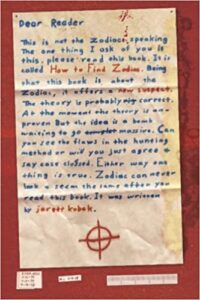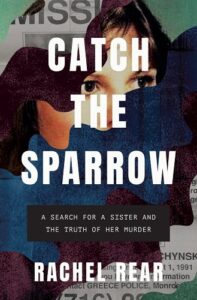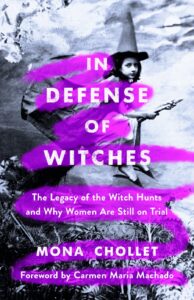A look at the best new crime nonfiction books released in February and March.

Susan Jonusas, Hell’s Half-Acre (Viking)
The many murders committed by some members of the Bender family in late 19th century Kansas remain one of the most confounding, unsettling cases in American history, in no small part because the killers seem to have escaped into oblivion, lost to history. In Hell’s Half-Acre, Susan Jonusas goes deep into the period’s archives to uncover previously unknown pieces of the story, focusing in large part on the Bender’s escape across the frontier, aided by communities of outlaws and tracked by incompetent detectives at the center of a sudden public maelstrom. Hell’s Half-Acre is an impressive piece of research and a wildly interesting tale relayed by a talented storyteller. –Dwyer Murphy, CrimeReads Editor-in-Chief

Erika Krouse, Tell Me Everything (Flatiron)
Erika Krouse has the kind of face where people tell her everything; or at least, that’s how she got hired as a private investigator when a lawyer found himself sharing far more with her in a bookstore than he usually would. He hired her on the spot to help him investigate a sexual assault at a college party, while he sued the school for creating a culture that would not only allow, but encourage, multiple instances of rape. Krouse tells the story with fierce outrage for the victims and a wry, self-deprecating wit when it comes to her own skills. This book fills the hole left in my heart by the end of Lie to Me. RIP that show. –Molly Odintz, CrimeReads Senior Editor

Jarrett Kobek, How to Find Zodiac (We Heard You Like Books)
Jarrett Kobek, author of the 2016 novel, I Hate the Internet, has taken on a fascinating project in his latest book, at once an ingenious piece of sleuthing and an epistemological endeavor alternating between meditative and exuberant registers, all centered around a mystery that grips the cold case community like no other: the search for the Zodiac killer. In short, Kobek believes (knowing full well how bizarre that very belief is) that he may have discovered the Zodiac’s identity. He then sets out to prove himself wrong…but can he managed to do it? Linguistic clues and quotations lead him to believe the Zodiac was a comic book collector at a time when the practice was rare. From there he hones in on one suspect and explores the case against him from every angle. The book brings a fresh and aware perspective to a mystery that has permeated the culture. –DM

Sarah Weinman, Scoundrel (Ecco)
In 1957, a teenage girl named Victoria Zielinski was murdered by a man named Edgar Smith. For the duration of the 60s, while in prison for the crime, Smith wrote numerous pleas for the overturning of the conviction, including to William F. Buckley Jr. In 1971, Edgar Smith was released, in large part thanks to Buckley, who led a campaign on his behalf, being apparently unable to believe that someone who held him (and his conservative beliefs) in such high regard could be a murderer. In 1976, Smith attempted murder again, and was finally shut away for life. Sarah Weinman does an impeccable job with this wild story of murder, celebrity, politics, and the American ability to put unsavory characters on a pedestal. –Julia Hass, Lit Hub Contributing Editor

Rachel Rear, Catch the Sparrow (Bloomsbury)
Rachel Rear grew up often thinking about her stepsister Stephanie Kupchynsky. How could she not? Rear’s mother got together with Kupchynsky’s father after Stephanie’s disappearance from her home Rochester in an age of serial killers. Stephanie had moved from Martha’s Vineyard to leave an abusive partner, but fell victim to a mysterious assailant while on the cusp of a new life. Rachel Rear’s beautiful, heartbreaking memoir is also a fierce interrogation of violence against women in American culture, and essential reading to understand the experience of the families left behind.–MO

Mona Chollet, In Defense of Witches: The Legacy of the Witch Hunts and Why Women Are Still on Trial
Translated by Sophie R. Lewis
(St. Martin’s Press)
This book looks so cool! And it’s not just cause of that perfect use of melodramatic purple on the cover. First of all, let’s just take a moment to celebrate the rarity of a work of nonfiction by a woman getting translated into English, because that doesn’t happen all that often. Plus, it’s about witches. And not only the history of witch burnings and what they meant for the persecution of difficult women, but how those same trends of ostracization and punishment are played out today. Ooh and there’s an intro from Carmen Maria Machado, which really clinches this one as a must-read. –MO

















